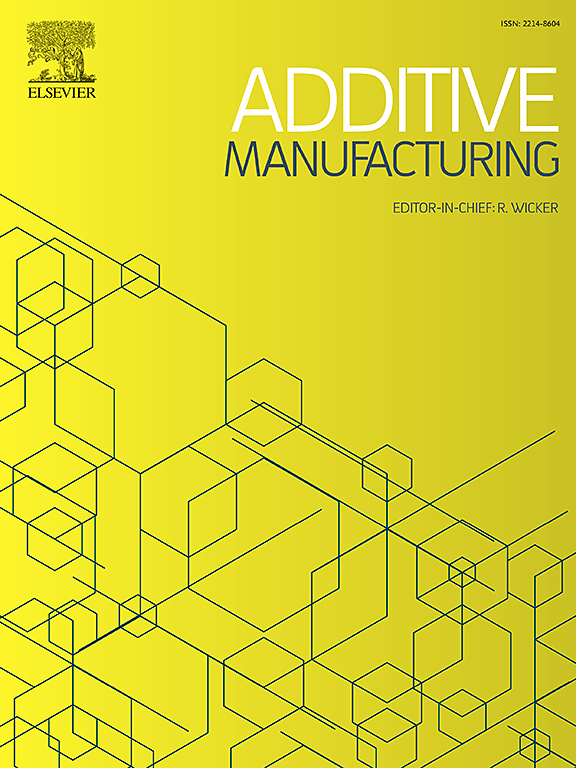IF 10.3
1区 工程技术
Q1 ENGINEERING, MANUFACTURING
引用次数: 0
摘要
本研究介绍了一种模拟激光粉末床熔融(LPBF)快速成型制造中残余应力和变形的方法,该方法整合了简化的有限元分析(FEA)框架、通过轮廓法绘制的高分辨率残余应力图以及机器学习(ML)算法,以提高模拟效率和精度。有限元分析模型采用双参数温度场,在保持精度的同时降低了计算复杂度。多层感知器 (MLP)、梯度提升 (GB) 回归器和随机森林 (RF) 回归器这三种 ML 模型在有限元分析仿真数据上进行了训练,并根据实验测量结果进行了验证,结果表明,它们在 52 兆帕至 84 兆帕的差异范围内表现出有效的性能。该方法还能进行精确的变形预测,从而实现变形缓解的关键应用,即将预测的变形反向应用于 CAD 模型,以抵消应力引起的翘曲。这种方法可将桥梁样品的变形从 0.94 毫米减少到 0.06 毫米--改善了 94%。这种综合方法为预测 LPBF 中的残余应力和减少变形提供了一个强大的工具,优化了设计和制造实践。本文章由计算机程序翻译,如有差异,请以英文原文为准。
Rapid residual stress simulation and distortion mitigation in laser additive manufacturing through machine learning
This study presents a methodology for simulating residual stress and distortion in Laser Powder Bed Fusion (LPBF) additive manufacturing by integrating a simplified finite element analysis (FEA) framework, high-resolution residual stress mapping via the contour method, and machine learning (ML) algorithms to enhance both simulation efficiency and accuracy. Using a two-parameter temperature field, the FEA model reduces computational complexity while maintaining precision. Three ML models, multi-layer perceptron (MLP), gradient boosting (GB) regressor, and random forest (RF) regressor, are trained on FEA simulation data and validated against experimental measurements, showing effective performance with discrepancies ranging from 52 MPa to 84 MPa. The methodology also enables accurate distortion predictions, allowing for a key application on distortion mitigation, where predicted distortions are inversely applied to the CAD model to counteract stress-induced warping. This approach reduces distortion in a bridge sample from 0.94 mm to 0.06 mm - a 94 % improvement. This integrated approach provides a robust tool for predicting residual stresses and mitigating distortions in LPBF, optimizing design and manufacturing practices.
求助全文
通过发布文献求助,成功后即可免费获取论文全文。
去求助
来源期刊

Additive manufacturing
Materials Science-General Materials Science
CiteScore
19.80
自引率
12.70%
发文量
648
审稿时长
35 days
期刊介绍:
Additive Manufacturing stands as a peer-reviewed journal dedicated to delivering high-quality research papers and reviews in the field of additive manufacturing, serving both academia and industry leaders. The journal's objective is to recognize the innovative essence of additive manufacturing and its diverse applications, providing a comprehensive overview of current developments and future prospects.
The transformative potential of additive manufacturing technologies in product design and manufacturing is poised to disrupt traditional approaches. In response to this paradigm shift, a distinctive and comprehensive publication outlet was essential. Additive Manufacturing fulfills this need, offering a platform for engineers, materials scientists, and practitioners across academia and various industries to document and share innovations in these evolving technologies.
 求助内容:
求助内容: 应助结果提醒方式:
应助结果提醒方式:


